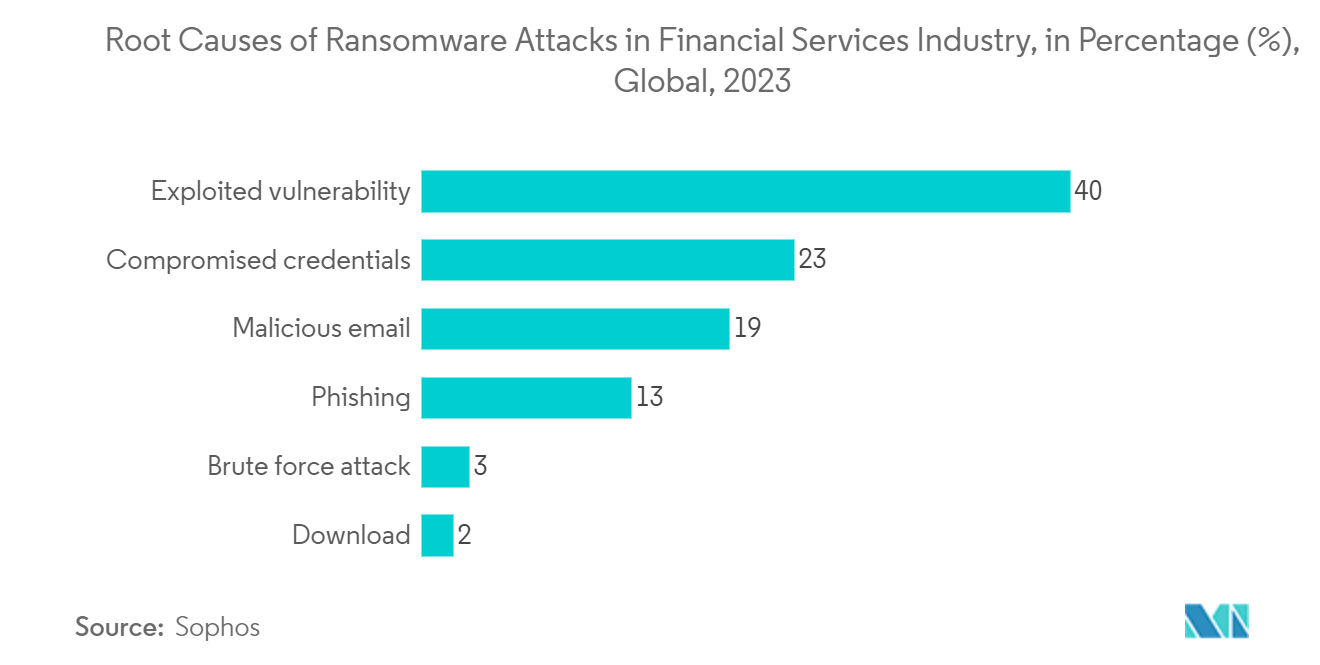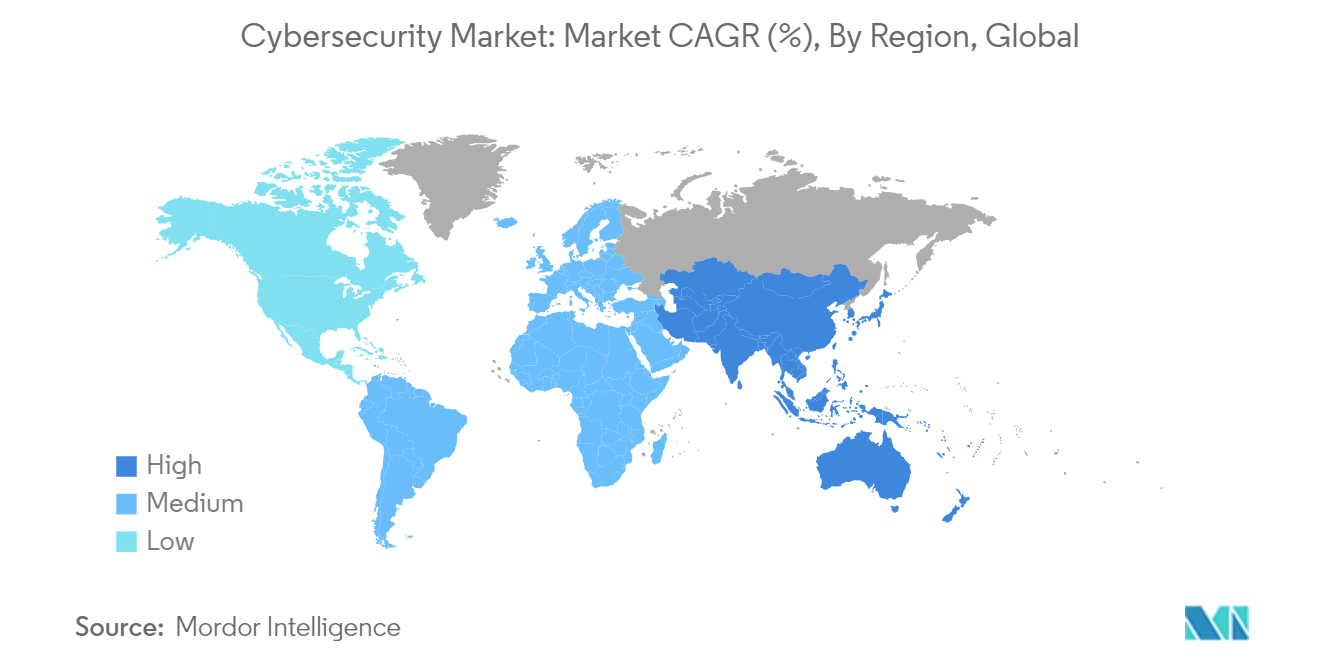Market Trends of Cybersecurity Industry
BFSI Industry to be the Largest End User
- The BFSI end-user industry in the cybersecurity market encompasses institutions involved in banking, financial transactions, insurance, and related financial services. These organizations prioritize robust cybersecurity measures to protect sensitive financial data, ensure regulatory compliance, and safeguard against cyber threats. The sector includes commercial banks, insurance companies, non-banking financial companies (NBFCs), investment firms, and credit unions.
- As financial institutions increasingly digitize their operations and services, robust cybersecurity measures are necessary. The BFSI sector is one of the key targets for cybercriminals due to the high-value transactions, sensitive customer data, and critical financial infrastructure it manages.
- Moreover, as per SentinelOne, there has been a substantial surge in the frequency and sophistication of attacks on the BFSI industry in recent years. Financial institutions were the sector with the second highest impact as per the number of reported data breaches last year. Ransomware attacks on financial services have increased to 64% in 2023 from 55% in 2022, almost double the 34% reported in 2021.
- The industry is witnessing a significant shift in security measures, driven by factors such as the digital transformation of financial services, cloud adoption, and integration of advancing technologies, such as blockchain and AI. The increasing prevalence of fintech innovations adds complexity, necessitating agile cybersecurity strategies to secure transactions and customer information in an interconnected and dynamic environment.
- According to Sophos, ransomware attacks on global financial organizations primarily stem from many key factors; 40% are due to exploited vulnerabilities, while 23% result from compromised credentials.
- The augment in the adoption of digital technologies and the rise of online financial services have stretched the attack surface for cyber threats in the BFSI sector. The expansion of mobile banking, digital payment platforms, and online transactions created new challenges for cybersecurity, necessitating advanced solutions to protect against fraud, data breaches, and other cyber risks.

North America Holds Largest Market Share
- The United States faces a continuously evolving and sophisticated cyber threat landscape, and it is at the epicenter of cybercrime globally due to the high penetration of digital technologies and cloud computing in end-user industries compared to other countries. It is the most highly targeted nation, and American businesses face a higher volume of attacks and more costly consequences when an attack is successful.
- Cybersecurity has become an increasingly important area of focus in the United States in recent years, owing to the augmenting number of cyber threats and attacks that organizations and individuals face. As per the Identity Theft Resource Center, in 2023, the United States witnessed 3,205 data compromises, impacting 353 million individuals. These compromises encompassed breaches, leaks, and exposures, culminating in one shared outcome: unauthorized access to sensitive data.
- The increasing frequency and sophistication of cyber-attacks drive the adoption of cybersecurity solutions in the United States. The growing regulatory requirement leads many organizations to adopt and invest in cybersecurity solutions, as many industries in the United States are subject to regulations such as HIPPA, GDPR, and PCI DSS, which require the organization to implement. Due to this, companies are increasing their investments in cybersecurity.
- For instance, in September 2023, the Open Commerce solution from Google Cloud and ONDC was accepted by over 20 e-commerce enterprises. This allows buyers, sellers, and logistical service providers to join the ONDC network seamlessly. With this, there will be an increase in the number of consumers and sellers who can use the generative AI tools offered by Google Cloud to transact on the network, particularly people who reside in smaller cities.
- The cybersecurity market in Canada is evolving with the increasing digitalization trends in different private and public sector sectors. For instance, the Canadian energy sector is entering a period of transformation, which is driven by the digital capabilities of technologies like cloud, AI, IoT, and quantum computing. As the industry evolves, the country's cybersecurity demand is growing.
- Cybercrime is rapidly gaining traction in Canada, and its impact is increasing alarmingly. According to a report published by the Communications Security Establishment (CSE) in August 2023, there were 70,878 reports of cyber fraud in Canada, with over USD 390 million stolen. The rising frequency and sophistication of cyber threats, including ransomware attacks and data breaches, have driven organizations in Canada to invest in cybersecurity solutions to protect against evolving threats.


